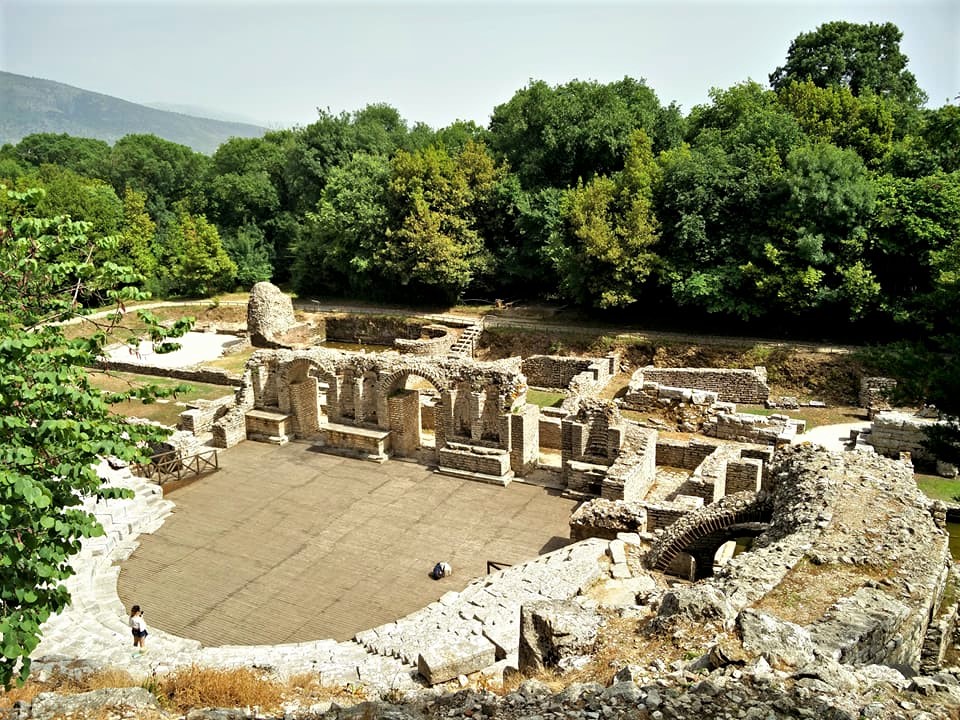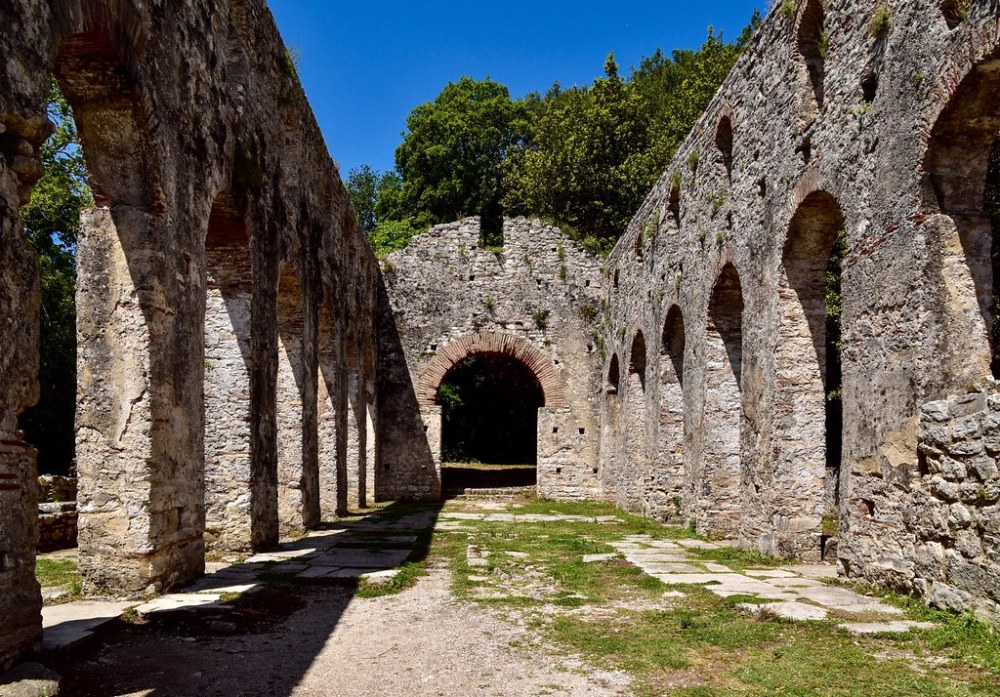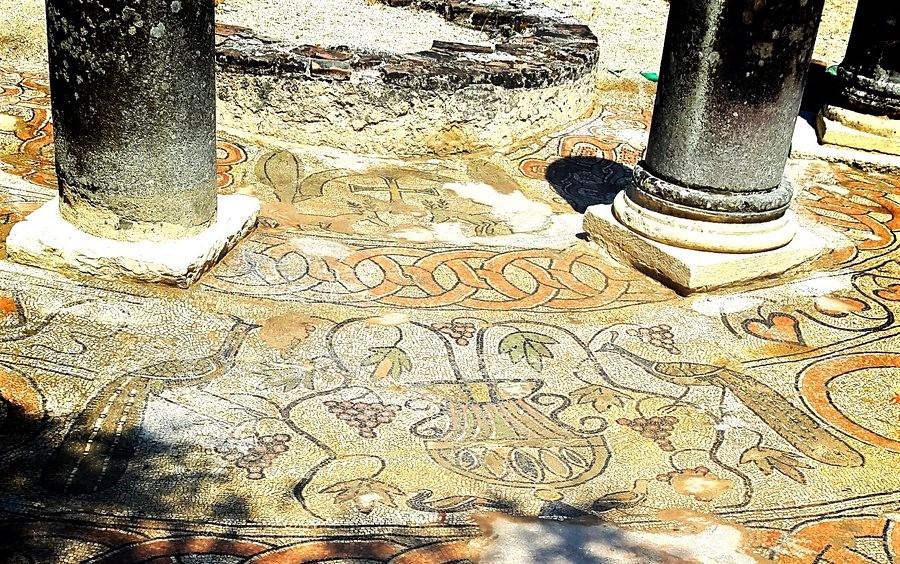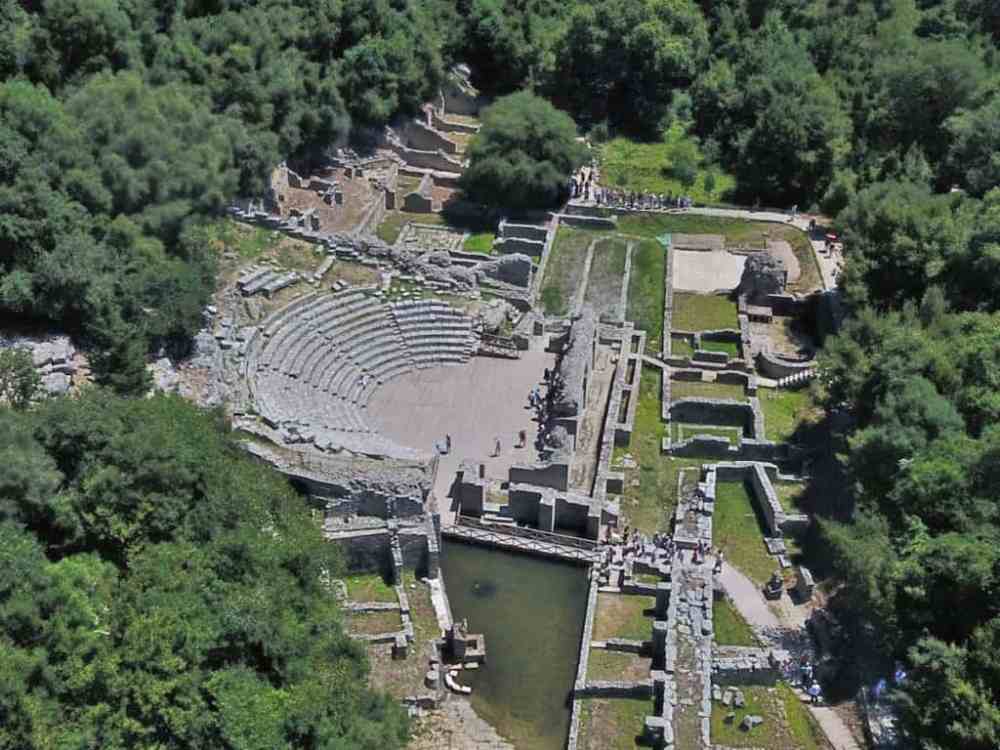Butrint, the pearl of southwest Albania is the most visited archaeological site of the country and for good reason: besides its exceptional natural setting, the park is a microcosm of the history of the Mediterranean, covering the Illyrian, Hellenistic, Roman, Byzantine, Venetian and finally Ottoman periods.
First excavated in 1928 by Italian teams, it was coveted by Khrushchev for a time, as a military base before the end of Soviet-Albanian relations contradicted his plans in 1961. The site was listed as a patrimony by UNESCO in 1992 and RAMSAR area in 2003.

The Birth of Christian iconography
One of the masterpieces of the ancient city is the paleochristian mosaic of the baptistery. Indeed, the fifth century AD. sees the development of Christianity in the region. It is at this period that Butrint becomes an episcopal center and adopts religious institutions such as the great basilica or the triconch palace.

The baptistery is a building linked to the beginning of Christianity and the will of the newly legal church to baptize in mass the whole population which is still pagan. With its centered plan, it is equipped with a baptismal font in which future Christians (children and adults) had to fully immerse themselves to be baptized. The columns were supporting a dome, today disappeared, that covered the monument. The walls and the dome were probably covered with painted frescoes.

However, the mosaic floor is in a very good state of conservation. Almost complete, it is composed of circles that represent nature, animal and geometric motifs (interlacing). In early Christian iconography, pagan representations are still used but they are often charged with Christian symbols (keep in mind that before 313 AD and the Edict of Milan, Christians were persecuted, the iconography then had to be pagan symbols that referred to a Christian message).
Thus the seven circles of the mosaic that lead to the baptismal font can be interpreted as the seven sacraments of Christianity (baptism, Eucharist, confirmation, reconciliation, anointing of the sick, marriage and ordination) that lead to Heaven.

The natural and animal motifs represent the whole divine creation but can also be read separately. The ivy is the symbol of eternal life while each animal medallion is a metaphor. Fish is often found as the paleochristian figuration of Christ. This comes from the word/ acronym Ichthus formed by the first letters of the sentence in ancient greek:
« Jesus Christ, Son of God, Savior »
- I (I, Iota) : Ἰησοῦς / Iêsoûs (« Jesus »)
- Χ (KH, Khi) : Χριστὸς / Khristòs (« Christ »)
- Θ (TH, Thêta) : Θεοῦ / Theoû (« Of God »)
- Υ (U, Upsilon) : Υἱὸς / Huiòs (« Son »)
- Σ (S, Sigma) : Σωτήρ / Sôtếr (« Savior »)
And the word Ichthus in ancient greek means fish. The hare eating a grape evokes the Eucharist (drinking the blood of Christ).

Finally on the way to go to the baptismal font stand out two scenes. The first, two peacocks eating clusters of grapes from a cup evokes the Eucharist. Peacocks until the Middle-Age were considered to have a flesh that does not mold and were the symbol of eternal life The second, two deers drinking from a divine spring, is the representation of Psalm 41 of St. Augustine of Hippo which begins with « As the deer pants for streams of living water, so my soul pants for you, my God.(…) » symbol of baptism. Two of the major Sacraments of initiation to Christianity are therefore on the mosaic. Finally, the intertwining is the representation of eternal life and infinity.
If the construction of the building took place at the end of the fifth century AD, the mosaic was set up in the sixth century. This is a great illustration of the Bible for a majority illiterate population at the time. It is composed of different materials bringing different colors. Thus white and black come from stones coming from the region, the red of the brick and the green, the blue and the yellow of the glass paste.
The finesse of its implementation shows the hard work of a team of specialized craftsmen. Although this masterpiece has been preserved through the ages, it is mostly invisible. Indeed, to protect it from the UV of the sun, which destroys the colors and humidity of the soil, which weakens the mosaic, it is covered by a thick layer of sand in the expectation of a more adequate solution. The mosaic is discovered only a few days in the year, usually between mid-August until mid-September. An opportunity to discover the unique site of Butrint.


It’s a really interesting place that I would like to visite one day !
J’aimeJ’aime
My visit was fuelled by great expectation and was not a disappointment. The thing that really surprised me was the huge amount of yet to be excavated city. Sadly I could not see the sand covered mosaic, but it would be nice if a decent account and images were on line of each of the figurative panels with the hares, birds etc. There were no postcards or any way of studying it in detail to be found on the internet.
J’aimeJ’aime
Usually (at least before Covid19) at the end of the visit next to the museum there are people selling great books about Butrint and you can find plenty of illustration in it. They also sell different postcards of the mosaic.
J’aimeJ’aime